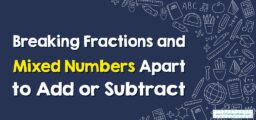Harnessing Properties: How to Add Three Fractions or Mixed Numbers with Ease
[include_netrun_products_block from-products="product/6-south-carolina-sc-ready-grade-3-math-practice-tests/" product-list-class="bundle-products float-left" product-item-class="float-left" product-item-image-container-class="p-0 float-left" product-item-image-container-size="col-2" product-item-image-container-custom-style="" product-item-container-size="" product-item-add-to-cart-class="btn-accent btn-purchase-ajax" product-item-button-custom-url="{{url}}/?ajax-add-to-cart={{id}}" product-item-button-custom-url-if-not-salable="{{productUrl}} product-item-container-class="" product-item-element-order="image,title,purchase,price" product-item-title-size="" product-item-title-wrapper-size="col-10" product-item-title-tag="h3" product-item-title-class="mt-0" product-item-title-wrapper-class="float-left pr-0" product-item-price-size="" product-item-purchase-size="" product-item-purchase-wrapper-size="" product-item-price-wrapper-class="pr-0 float-left" product-item-price-wrapper-size="col-10" product-item-read-more-text="" product-item-add-to-cart-text="" product-item-add-to-cart-custom-attribute="title='Purchase this book with single click'" product-item-thumbnail-size="290-380" show-details="false" show-excerpt="false" paginate="false" lazy-load="true"]

However, by utilizing the properties of addition, this process can be simplified and made more intuitive. In this guide, we’ll explore how to add three fractions or mixed numbers by leveraging these properties. For additional educational resources,.
Step-by-step Guide to Add Three Fractions or Mixed Numbers with Ease:
1. Understanding Addition Properties: For additional educational resources,.
There are two main properties of addition that can be helpful: For additional educational resources,.
– Commutative Property: The order in which numbers are added doesn’t affect the sum. For example, \(a + b = b + a\).
– Associative Property: The way numbers are grouped in addition doesn’t affect the sum. For example, \(a + (b + c) = (a + b) + c\).
2. Converting Mixed Numbers to Improper Fractions:
If you’re dealing with mixed numbers, convert them to improper fractions. This makes the addition process more straightforward.
3. Finding the Least Common Denominator (LCD):
Determine the smallest number into which all the denominators can divide. This will ensure that the fractions are of comparable sizes.
4. Adjusting Each Fraction to the LCD:
Modify each fraction so that they all have the LCD as their denominator.
5. Performing the Addition:
With the same denominator in place, simply add up all the numerators to get the final answer.
6. Converting Back to Mixed Numbers (if necessary):
If the result is an improper fraction, and you need a mixed number, convert it back.
Example 1:
Add \(\frac{1}{4}\), \(\frac{2}{8}\), and \(1 \frac{1}{2}\).
Solution:
First, convert the mixed number: \(1 \frac{1}{2}\) becomes \(\frac{3}{2}\).
The LCD for 4, 8, and 2 is 8. Adjusting the fractions:
– \(\frac{1}{4}\) becomes \(\frac{2}{8}\).
– \(\frac{2}{8}\) remains the same.
– \(\frac{3}{2}\) becomes \(\frac{12}{8}\).
Adding them up, the result is \(\frac{16}{8}\), which is equal to 2.
The Absolute Best Book for 5th Grade Students
Example 2:
Add \(\frac{1}{3}\), \(\frac{2}{6}\), and \(2 \frac{1}{2}\).
Solution: For education statistics and research, visit the National Center for Education Statistics.
First, convert the mixed number: \(2 \frac{1}{2}\) becomes \(\frac{5}{2}\). For education statistics and research, visit the National Center for Education Statistics.
The LCD for 3, 6, and 2 is 6. Adjusting the fractions: For education statistics and research, visit the National Center for Education Statistics.
– \(\frac{1}{3}\) becomes \(\frac{2}{6}\). For education statistics and research, visit the National Center for Education Statistics.
– \(\frac{2}{6}\) remains the same. For education statistics and research, visit the National Center for Education Statistics.
– \(\frac{5}{2}\) becomes \(\frac{15}{6}\). For education statistics and research, visit the National Center for Education Statistics.
Adding them up, the result is \(\frac{19}{6}\), which can be expressed as \(3 \frac{1}{6}\). For education statistics and research, visit the National Center for Education Statistics.
Practice Questions:
1. Add \(\frac{1}{5}\), \(\frac{2}{10}\), and \(1 \frac{3}{4}\). For education statistics and research, visit the National Center for Education Statistics.
2. Add \(\frac{3}{7}\), \(\frac{2}{14}\), and \(2 \frac{1}{2}\).
3. Add \(\frac{4}{9}\), \(\frac{2}{3}\), and \(3 \frac{1}{3}\).
A Perfect Book for Grade 5 Math Word Problems!
Answers:
1. \(2 \frac{9}{20}\)
2. \(4 \frac{1}{14}\)
3. \(6 \frac{5}{9}\)
The Best Math Books for Elementary Students
Related to This Article
More math articles
- The Ultimate 6th Grade Math Course (+FREE Worksheets)
- FREE SSAT Upper Level Math Practice Test
- Algebra 1 Fundamentals: A Guide for Students and Teachers
- Estimating Sums
- Top 5 Laptop Stands to Help You Teach Online
- Top 10 CBEST Prep Books (Our 2026 Favorite Picks)
- ISEE Math- Test Day Tips
- What Is the Best GED Math Study Guide?
- Top 10 PSAT 10 Math Practice Questions
- SAT Math Subjесt Lеvеl 1 Calculator Tips and Hints
















What people say about "Harnessing Properties: How to Add Three Fractions or Mixed Numbers with Ease - Effortless Math: We Help Students Learn to LOVE Mathematics"?
No one replied yet.